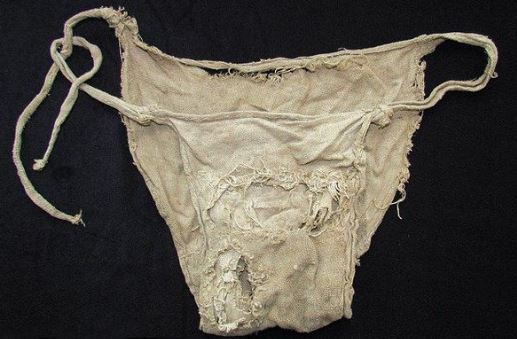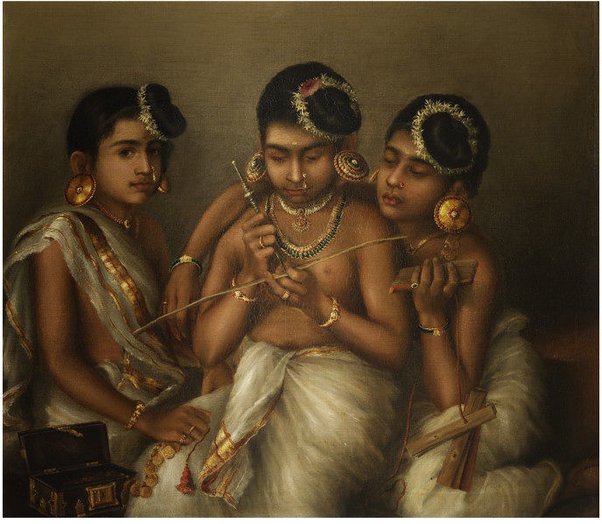Medieval women, as you probably already know, didn’t wear underwear — or at least they didn’t have a garment like underpants. A woman’s shift functioned as her underwear. Its function was to protect the outer dress from body oils and stains.
When a woman was in menstruation, they used a garment that looked something like a bikini bottom.
This garment would be lined with rags. if the woman was very poor, it might be lined with moss or some other absorbent fiber. Most women would have laundered the rags after use and stored them for the next month’s usage.

Onnara mundu
There used to be a little function for young girls on the threshold of puberty to move from a konakam or loincloth to the more sophisticated and feminine onnara mundu. It was one of our rites of passage. The onnara mundu did for the waist what the corset did for the upper body for women in the West.
The upper portion of the body was bare. Nobody really cared how ‘stuff’ grew 😛 All the focus was on the waist and downward. Hence the importance of the onnara mundu. It was tied very tightly around the growing waists of the girls. It was done so in order to give them the trademark South Indian body shape as they grew older. But due to the fabric, it was very comfortable to wear and gave the wearer a sense of modesty. Let’s just say that it hugged to the body just like any modern-day underwear does. The main mundu would be worn over this. In fact, it was considered sensuous to spot the blurred outlines of a woman’s onnara mundu under her mundu when she passed by
During menstruation, women would place several rectangular pieces of thicker cotton inside their onnara mundu to absorb the menstrual discharge. Due to the general tight nature of the attire, the pieces wouldn’t move an inch thereby ensuring a clean and problem-free period. And these would then be washed, starched and dried for reuse until they looked worn out.

Also Read – WHY DO ONIONS MAKE YOU CRY?



